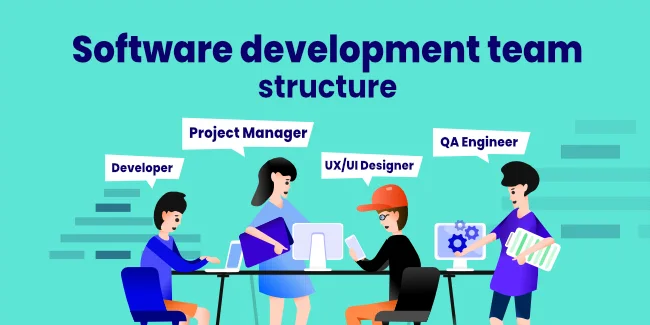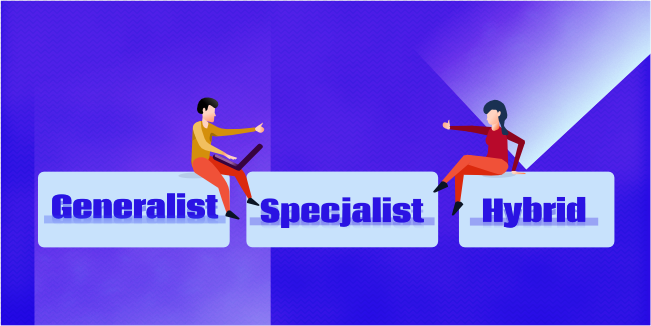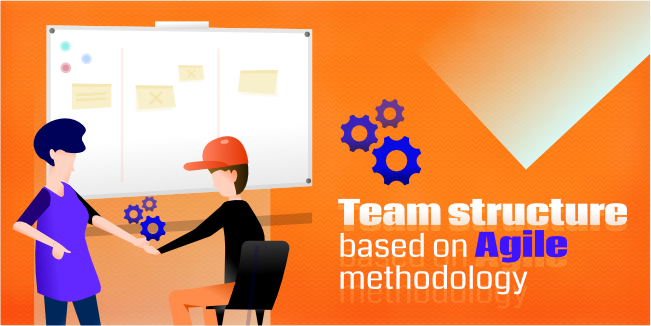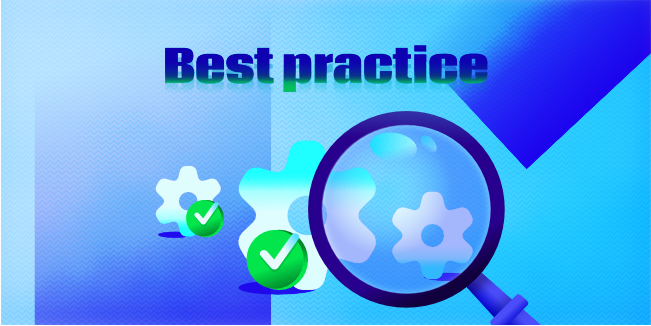development
software
team
structure
softwaredevelopmentteam
Software development team structure

As the best product development company, we realize that people are the key to the success of any project. You can have a fantastic business idea, great tools, and a massive budget, but you have no chance of success without a well-built team.
A well-built team gives the right direction to product development. Therefore, each project must begin with building a team structure. But how to do it? After all, it is evident that there is no single recipe for this task.
In this article, we will introduce you to the typical structures of development teams and reveal the best practices for building an effective team structure.
Types of Software Development Team Structure
We'll begin by discussing the most common development team structures you may encounter in the industry. There are three types: generalists, specialists, and hybrids. Now let's look at the differences between them:
A generalist team comprises individuals with a wide range of general knowledge and professional experience. Each member of the team has some expertise in many product development categories, but none has comprehensive knowledge in any one area. For this reason, it often happens that a specialist with specific skills and knowledge must be added to the team during the project.
The product team's "specialized" structure includes specialists with detailed skill sets who are competent at executing limited operations. Everyone is a professional in their field; therefore, they are fully responsible for their design element. This sort of arrangement is trendy among software development teams. A staff like this ensures that your product has high quality. However, the poor level of communication can pose a threat here: the lack of a moderator or team lead can be a challenge for individual specialists.
The hybrid team structure is a combination of both specialists and generalists. These teams can generally start working on a project but narrow it down to more specialized functions if necessary. The hybrid model is the best option as the software development process is as effective as possible. The disadvantage of this model is that the construction of the hybrid unit is time-consuming and very expensive. Moreover, coordinating the work of such different people can be a big challenge.

Typical structure of a development team
Currently, most of the project teams involved in software development operate in the Generalist model. It is mainly due to the companies' budget and time constraints. Only a few companies can choose a hybrid model. Therefore, it is helpful to look at the roles of the individual members of the general model team.
The client is the originator of the project. He sets business goals and is often responsible for preparing detailed documentation of his idea. He explains all the assumptions of the project and defines his expectations. The client can collaborate with any team members.
PM is a key team member. The Project Manager coordinates the work of all project participants on an ongoing basis and is responsible for the implementation of the project. Supervises the schedule of performance of individual tasks and supervises the budget. He also manages relations between stakeholders and all departments in the company.
A business Analyst (BA) is a person who is in charge of defining objectives, analyzing and documenting the fundamental procedures and systems, and ensuring that the company model is in line with technology. BA is versatile enough to fulfill all requirements. Business analysts check what works and what doesn't, determining where business growth should go.
It is a person who creates how consumers will use your product. They ensure that all features meet people's needs and achieve corporate goals. They are responsible for determining what the product will look like and how it will function. The primary aim of a UX designer is to make things easier for users.
-
Developers (Front-end/ Back-end)
These are the people who deal with coding. While front-end developers work on customer-facing product elements, back-end developers take care of its functionality, i.e., everything the user does not see and affects the project's reception.
-
Quality Assurance Engineer (QA)
The Quality Assurance Engineer (QA) tests the product to ensure it performs well and meets the client's expectations of quality standards. It detects errors so the team can fix them before end-users evaluate the product. The role of QA cannot be overestimated in any project.
How is the Agile software development team structure different?

The above team-building models are traditional models that are not very flexible and resistant to change. For this reason, many companies build a team structure based on Agile methodology, which is highly flexible and focused on people and the project's final result, rather than sticking to a plan once adopted.
At first glance, the Agile team structure is not much different from a typical software development team. However, it is not the positions that make the most significant difference. The Agile team has some new items, which we will present below.
The main difference is the approach to the whole development process. Agile puts people and relations between them first, not processes and gears, as in a typical model. The Agile team focuses on creating functional software, not creating documentation. The team must be flexible in operation and react quickly to changes. In the process, great importance is attached to high-quality cooperation with the client.
If you want to learn more about the Agile methodology, please read our article.
Roles and Responsibilities in the Agile Team Structure
The PO is often the project's most important stakeholder. It is someone with extensive expertise with users and products, and they must develop them. The PO is in charge of ensuring that the finished product satisfies the customer's requirements. The PO supervises the team, helps and coordinates its activities, and ensures that all product criteria are satisfied.
Scrum Master coordinates the work of the entire team. He plays a crucial role in the Agile team structure. He manages tasks and streamlines processes based on Agile methodologies in line with the Agile manifesto. As we mentioned earlier, the most important in this business model is people and their way of cooperation with each other.
They're in-house developers who collaborate on the project as a group. The Agile team, like a standard one, includes front-end and back-end developers, UX designers, and QA testers. They are all engaged in the product's development.
Best practices for effective software development team structure

The overriding goal is always to create the best product in the world. But no outstanding product has been created by a team of random people who cannot work together. Therefore, creating an appropriate product team structure is key to success. A team that will be product-focused and collaborative.
This task is only apparently simple. Almost every company can hire qualified specialists with high competencies. But only a few companies can create appropriate working conditions conducive to the motivation and commitment of employees. Added to this is the ability to build and manage software development teams.
Below are some tips that will make this task easier for you.
-
Choose the team structure relevant to your project
The most effective software development team is one that is tailored to the project. Therefore, before starting to build the team structure and the team itself, carefully analyze the assumptions of your project. You need to know precisely your expectations and the expectations of end users. You need to know the budget and the duration of the project. These are just a few factors, but they are crucial to team building. It is commonly believed that the best structure is a hybrid model, but perhaps due to the assumptions of your project, it will not be the best option (e.g., due to a tight budget). Therefore, careful project analysis is the first step in the planning and team-building process.
People and their relationships are a prerequisite for a successful team structure. People can vary widely. Everyone has their method of conduct and communication that may not match someone else's. Some individuals cannot collaborate well together. That is why it is essential to know your employees: not only in terms of business skills but also in terms of personality.
When building a team, try to select people who have experience working on joint projects and get along well with each other. People also have to adapt to the project. If the project is difficult and risky, put someone on the team who is not afraid of taking risks and making difficult decisions. Suppose your project is based on a methodology only briefly known to team members. In this case, it will be necessary to find an expert in the field and add him to the crew.
In addition, you need to monitor how everyone feels in the software development team and whether there are any problems by chance.
-
Split big teams into smaller ones
A large team is more challenging to manage. From our over 12 years of experience in creating successful software, it is much easier to coordinate the work of smaller groups. If your project requires a large team's work, the best solution is to divide it into components, each of which has a leader. The most effective teams are those consisting of 4-7 people.
A flexible team is what an Agile team entails. It's as simple as that. In practice, it implies that you should be responsive to change, treat people as individuals rather than human resources, and provide a unique solution for each issue.
-
Let your team own the project
Top-down management is slowly becoming a thing of the past, and eternal control affects team morale and kills creativity. A well-chosen and built team has common goals and does its job well because it wants to do it, not because it has to do it.
Therefore, let your team take full responsibility for the project. It, of course, does not mean leaving the project unattended. The idea is to support people in making difficult decisions, to give them a chance to be creative and problem-solving. In such a model, expectations, roles, and areas of responsibility are defined right from the start, and people hold each other accountable for progress.
Communication is always at the center of teamwork, and software development is no exception.
Each team must constantly contact each other, even if individual members work in a different city or country. Therefore, take care of the tools, thanks to which the whole team will be in touch so that they can share responsibilities and various ideas regarding the project.
Each team member must have clearly defined responsibilities. However, the basis of working in the Agile methodology is also a quick response to change. Therefore, it is worth remembering that development team roles are not assigned once and for all. Suppose during the project it turns out that one of the team members has too much work. In that case, you must divide the responsibilities again and not stick to the plan rigidly. In addition, you must be prepared for random factors, e.g., sudden illness of an employee. Then you also have to react immediately and not wait because any delay will be associated with financial issues.
Summary
The software development team structure is essential for successful product creation. Your team's identity will be determined by various things, such as the degree of difficulty, budget, and deadlines. Agile team structures are very beneficial since they allow for adaptability and freedom while prioritizing the essential concerns throughout the process.